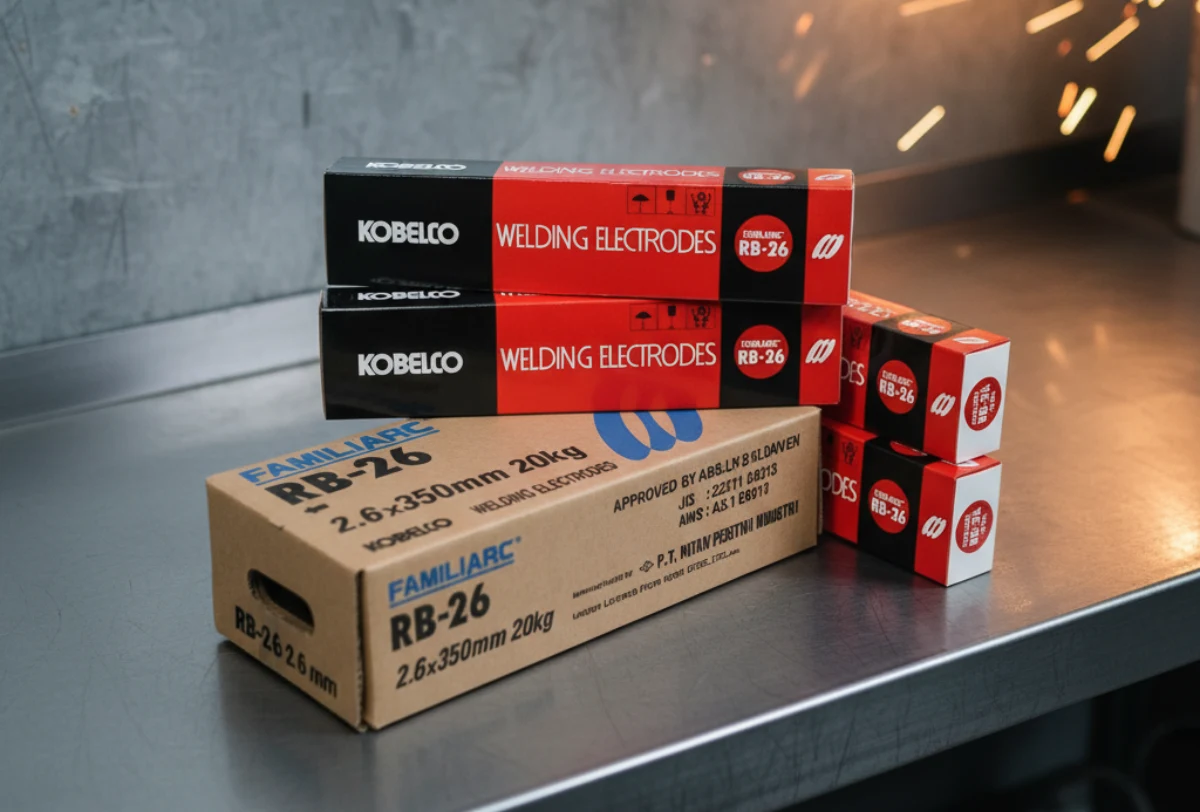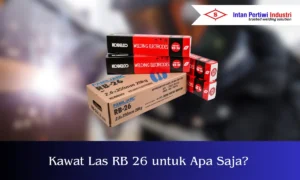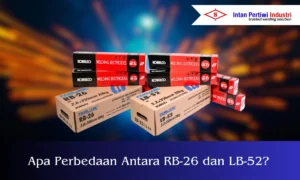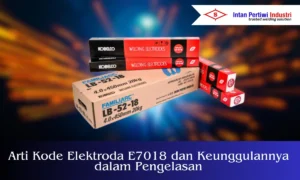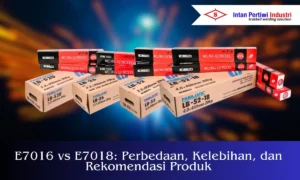Carbon steel welding electrode is often used in workshops and projects because it is easy to shape and strong, but it is sensitive to heat and hydrogen. That is why the choice of electrode, current, and technique determines the quality of the connection.
By understanding the characteristics of the material, you can reduce the risk of porosity, cold cracks, lack of fusion, and undercuts from seam preparation to the final layer.
This guide summarizes how to select the right electrode types such as E6013 and E6019, determine the diameter and safe current range, and apply techniques for flat, horizontal, vertical, and overhead positions.
You will also find recommendations for carbon steel welding electrode products that are relevant for everyday fabrication and structural needs to ensure neat, strong, and consistent results that pass inspection.
Table of Contents
ToggleWhat is Carbon Steel Welding Electrode?
Carbon steel welding electrode is a filler material specially designed to join and repair components made of carbon steel through the welding process.
The goal is to produce a strong, ductile, and consistent joint with appropriate heat control to minimize the risk of porosity and cracking.
Why is Electrode Selection Important for Carbon Steel?
Carbon steel has good strength and is easy to form, but it is sensitive to heat and hydrogen. Incorrect welding electrode selection can lead to porosity, cold cracks, lack of fusion, and undercuts.
Proper electrode selection helps control heat input, arc stability, and deposit quality, resulting in strong, neat, and consistent joints.
Material Characteristics and Their Impact on Welding
Carbon content affects the hardness and ductility of the material after welding. Higher carbon content increases the risk of cracking due to residual stresses and structural changes.
The surface must be free of rust, oil, and moisture to prevent trapped gases from forming pores. Proper weld preparation and welding speed control ensure a stable weld pool.
General Risks to Anticipate
Porosity often occurs due to dirty surfaces or excessive arc length. Cold cracks are associated with dissolved hydrogen and excessively rapid cooling.
Lack of fusion and undercuts occur due to improper angle and speed of movement. All of these risks are reduced when the electrode, current, and technique are selected appropriately.
The Most Common Types of Welding Electrode for Carbon Steel
The selection of welding electrode for carbon steel is based on application requirements, location, and resources. For the SMAW process, three types stand out for carbon steel.
1. E6013 for Ease and Neat Finishing
E6013 is known for its easy ignition and easy-to-disengage slag. The resulting bead tends to be smooth, making it suitable for general fabrication, light repairs, and thin to medium-thin plate.
This electrode is comfortable to use on AC and DC currents so it is flexible in many workshops.
2. E7016 for Structures with Low Hydrogen Requirements
E7016 is used when higher strength and tight hydrogen control are required. A suitable flux coating helps reduce the risk of cracking.
These electrodes are suitable for structures and joints subject to dynamic loads. When available, drying the electrodes according to the manufacturer's recommendations maintains the quality of the flux coating.
3. E7018 for High Strength and Crack Control
E7018 offers high tensile strength and good toughness. It is widely used in construction and heavy fabrication. Proper use requires electrode moisture control, oven storage, and stable current regulation to ensure dense, defect-free beads.
Choosing the Right Diameter and Flow
Starting with the required material thickness. For three- to six-millimeter plates, a diameter of two-point-six or three-point-two millimeters is generally sufficient.
For plates over six millimeters, a diameter of three point two to four millimeters is often chosen. Start with the mid-range current recommended by the electrode, then adjust based on the pool's appearance, bow sound, and bead height.
AC or DC power sources affect arc stability. DCEP polarity often provides better penetration in many SMAW applications.
Practical Principles of Flow Regulation
Too low a current will result in insufficient melting. Too high a current will increase spatter and the risk of undercutting. Monitor bead shape and path width.
Keep the arc length short for optimal protection from gas and slag. In the vertical position, use the stringer technique with a brief pause at the edge of the track to support the pool.
Carbon Steel Welding Electrode Recommendations
These three options are available for your carbon steel welding electrode needs. Choose according to your team's function and work habits.
1. Welding Electrode RB-26 E6013
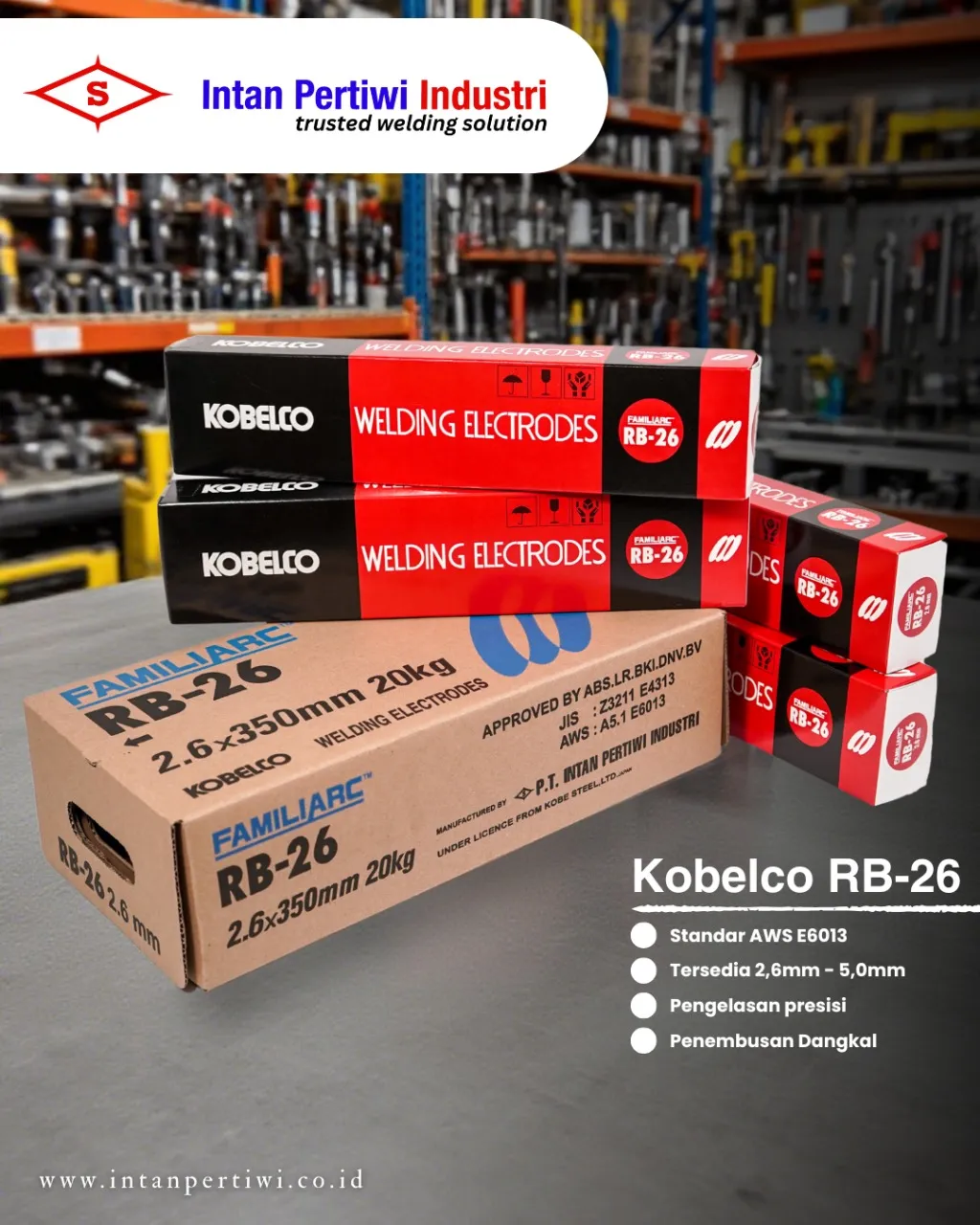
RB-26 offers a gentle arc, easy-to-flake slag, and a neat bead appearance. It is suitable for thin to medium-thin plate, general workshop work, and component repairs requiring a clean finish.
Can be used on AC or DC so it is practical in various welding machines. RB 26 welding electrode sizes are available 2.0 mm, 2.6 mm, 3.2 mm, 4.0 mm, 5.0 mm.
View Product: Welding Electrode RB-26
2. Welding Electrode MS-77 E6013
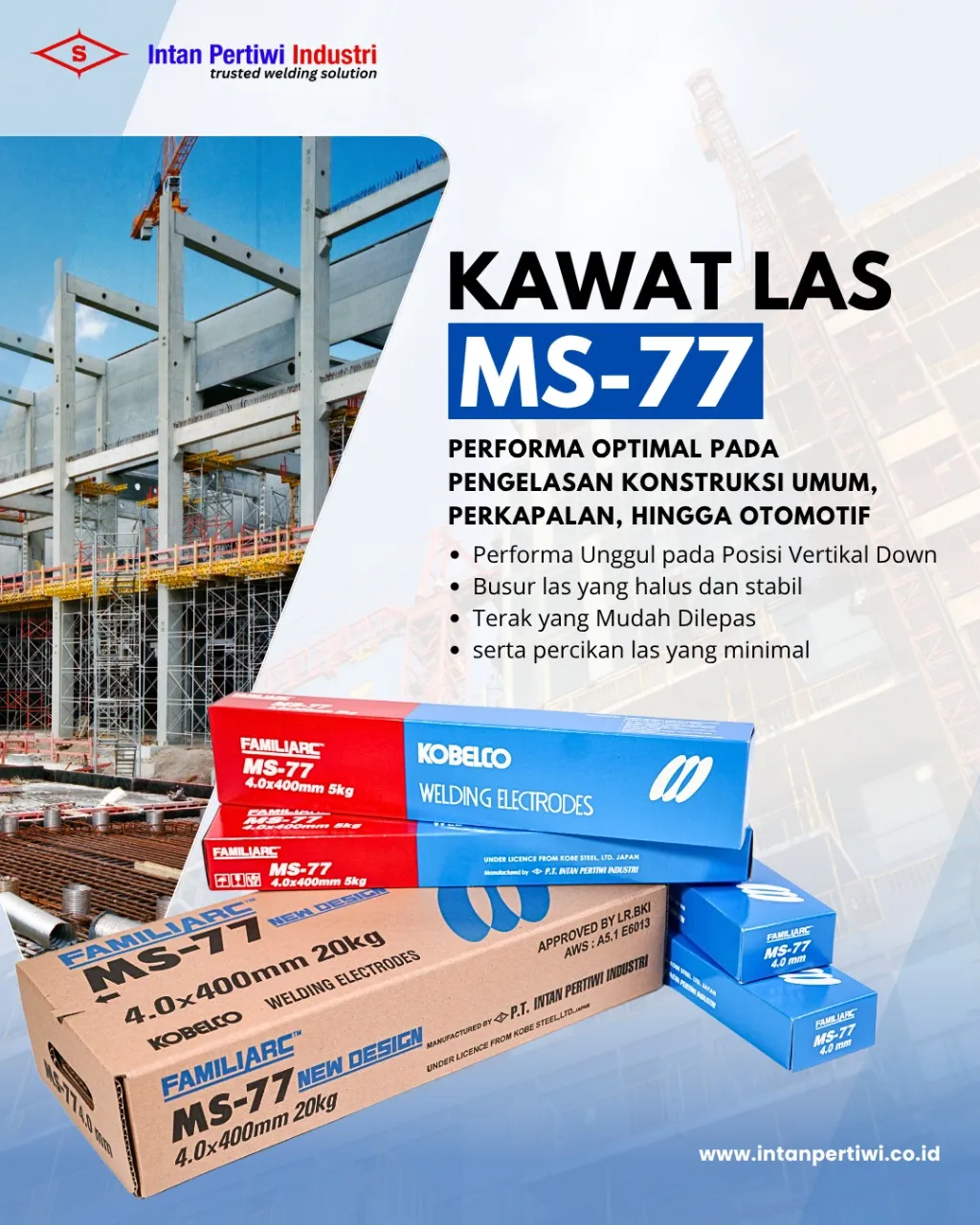
The MS-77 prioritizes easy start-up and bead travel control. It produces smooth results with light slag removal. This choice is suitable for routine work, bracket manufacturing, and light paneling.
Stable at moderate currents and comfortable for operators who want a consistent arc feel.
MS 77 welding electrode sizes are available in 2.6 mm, 3.2 mm, 4.0 mm.
Lihat Produk : Welding Electrode MS-77
3. Welding Electrode B-17 E6019
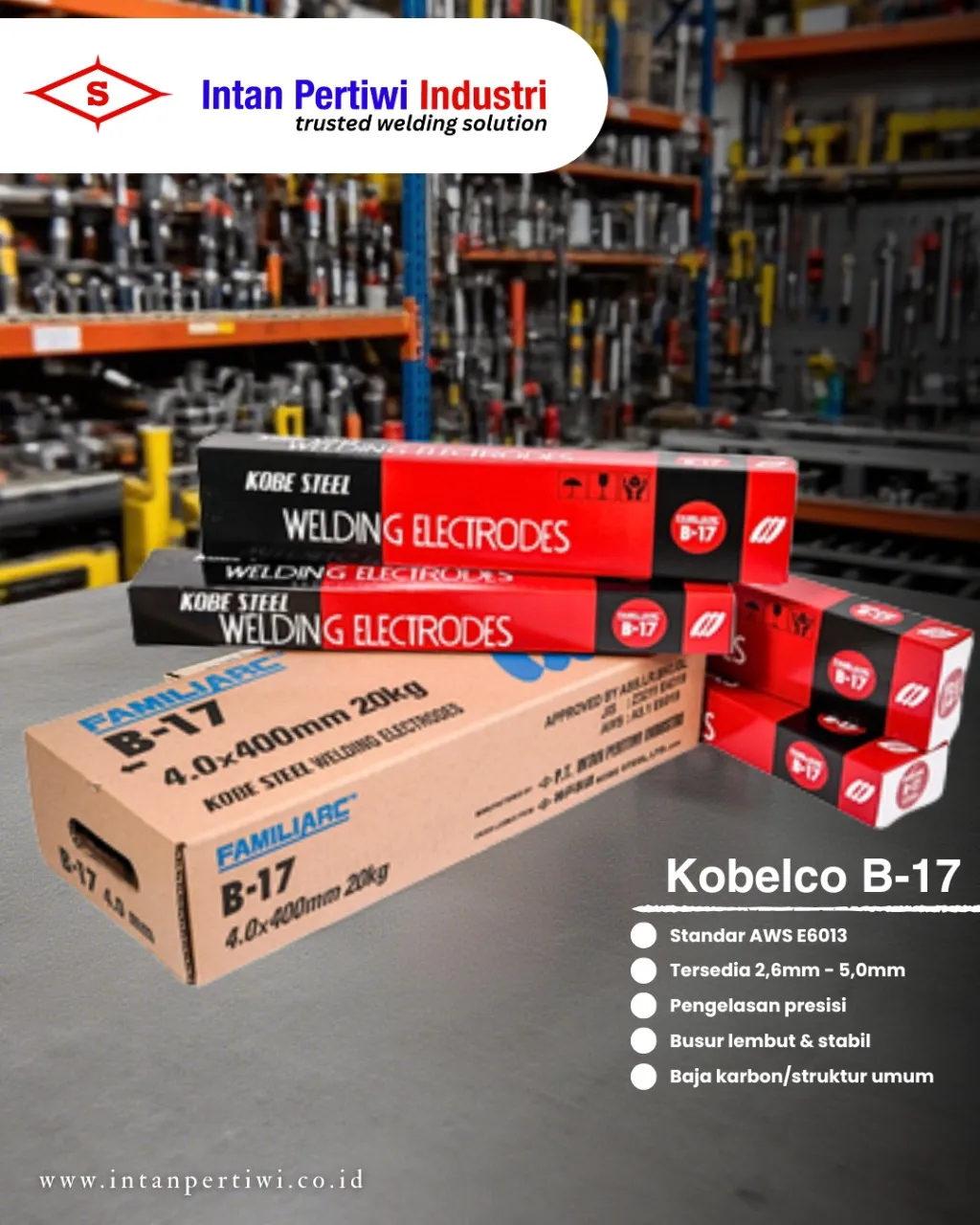
The B-17 is designed for deeper penetration and performance in a variety of positions. It is suitable for thicker frames and structures.
Use controlled movement techniques to keep the pool stable. A compact finish helps reduce rework.
Welding electrode size B 17 available 2.6 mm, 3.2 mm, 4.0 mm.
View Product : B-17 Welding Electrode
Welding Positions on Carbon Steel
Position influences current and technique choices. Each position requires consistent pool control and electrode angle.
1. Flat and Horizontal for Productivity
In a flat, horizontal position, the filling rate can be increased because gravity helps hold the pond in place. A stable thrust angle minimizes undercutting. Light weaving techniques can be used to cover wider seams.
2. Vertical Up for Thick Structures
In the vertical position, the pool tends to drop. Use short, controlled strokes. Pause briefly at the edge of the seam to ensure proper integration. Reduce the flow slightly from the flat setting to prevent the pool from becoming too fluid.
3. Overhead for Difficult Areas
In the overhead position, the weld must be very controlled. Shorten the arc and maintain a constant speed. A stable body position and grip on the welding rod help keep the line neat and free of excess drips.
WPS, AWS Classification, and Compliance
The WPS document ensures a repeatable and controlled process. The electrode codes in the AWS standard provide guidance on tensile strength, position, and coating type.
1. Reading Relevant Codes for Carbon Steel
The letter E stands for SMAW electrode. The first two numbers indicate the tensile strength. The third number indicates the position. The final number relates to the type of flux and the appropriate current.
By understanding this code, product selection becomes objective and according to connection needs.
2. Mandatory Parameters in WPS
Enter a preheat value for thick materials or humid environments. Adjust the interlayer temperature to control thermal stress. Determine a realistic range of current, voltage, and travel speed.
Include cleaning procedures before and after welding to ensure consistent quality.
Quick Troubleshooting
Common problems can be solved with simple, disciplined steps.
Porosity
Remove rust, paint, oil and moisture. Shorten the arc length. Make sure the electrode is dry. Protect the work area from wind gusts. If it still appears, evaluate the current and angle parameters.
Cold Crack
Apply preheat according to material requirements. Use low-hydrogen electrodes for structural applications. Avoid rapid cooling by maintaining a stable interpass. Perform a visual inspection immediately after the weld is completed.
Undercut and Spatter
Adjust the electrode angle to avoid excessive pressure on the edge. Reduce the current if you see erosion of the groove. Maintain a steady speed. Light finishing with a stringer technique helps smooth out the bead edge.
If the project touches on corrosion-resistant materials, also see our stainless steel welding electrode.
Quick Comparison to Make Choice Easy
The RB-26 and MS-77 are both E6013-style, with a focus on ease of use and a smooth finish. The RB-26 tends to have a very soft bow feel.
The MS-77 provides comfortable bead travel control on repetitive jobs. The B-17, as the E6019, offers better penetration with multi-position capability for more demanding construction needs.
Concise Case Study
The thin frame fabrication scenario using E6013 showed good working speed and clean finishing resulting in reduced grinding time.
On structural projects with thicker slabs, E6019 provides reliable fusion at the root joint and the finish. In both cases, disciplined surface preparation, flow control, and angle control are key to the outcome.
Call to order
Ready to order carbon steel welding electrode for your project? Contact us now through our contact information. Our team will provide recommendations and a quote tailored to your needs.
Carbon Steel Welding Electrode FAQ
1) What is the best welding electrode for thin to medium carbon steel?
For thin to medium-thin plates, E6013, like RB 26 or MS 77, is suitable due to its easy start-up, light slag, and fine bead production. Both are suitable for use on both AC and DC, making them convenient in the workshop.
2) When to choose B 17 E6019 over E6013
Choose B-17 when deeper penetration and performance in a variety of positions are required. This product is suitable for thicker frames and structures as well as demanding construction jobs.
3) How to determine the starting current for E6013
Start at a mid-current according to the packaging recommendations. Observe the pool shape, lane width, and arc sound. Increase the flow slightly if there's insufficient fusion. Lower the flow slightly if undercuts are visible. Keep the arc length short.
4) Can RB 26, MS 77, and B 17 be used on AC and DC?
The RB 26 and MS 77 can be used on both AC and DC. The B 17 generally operates on either AC or DC, depending on the machine. Perform a short test to ensure a stable arc on the available equipment.
5) How to prevent porosity and cold cracks when welding carbon steel
Remove rust, paint, and oil. Ensure the electrode is dry. Shorten the arc length and protect the work area from drafts. Apply preheat as needed and maintain the temperature between layers to prevent rapid cooling.


